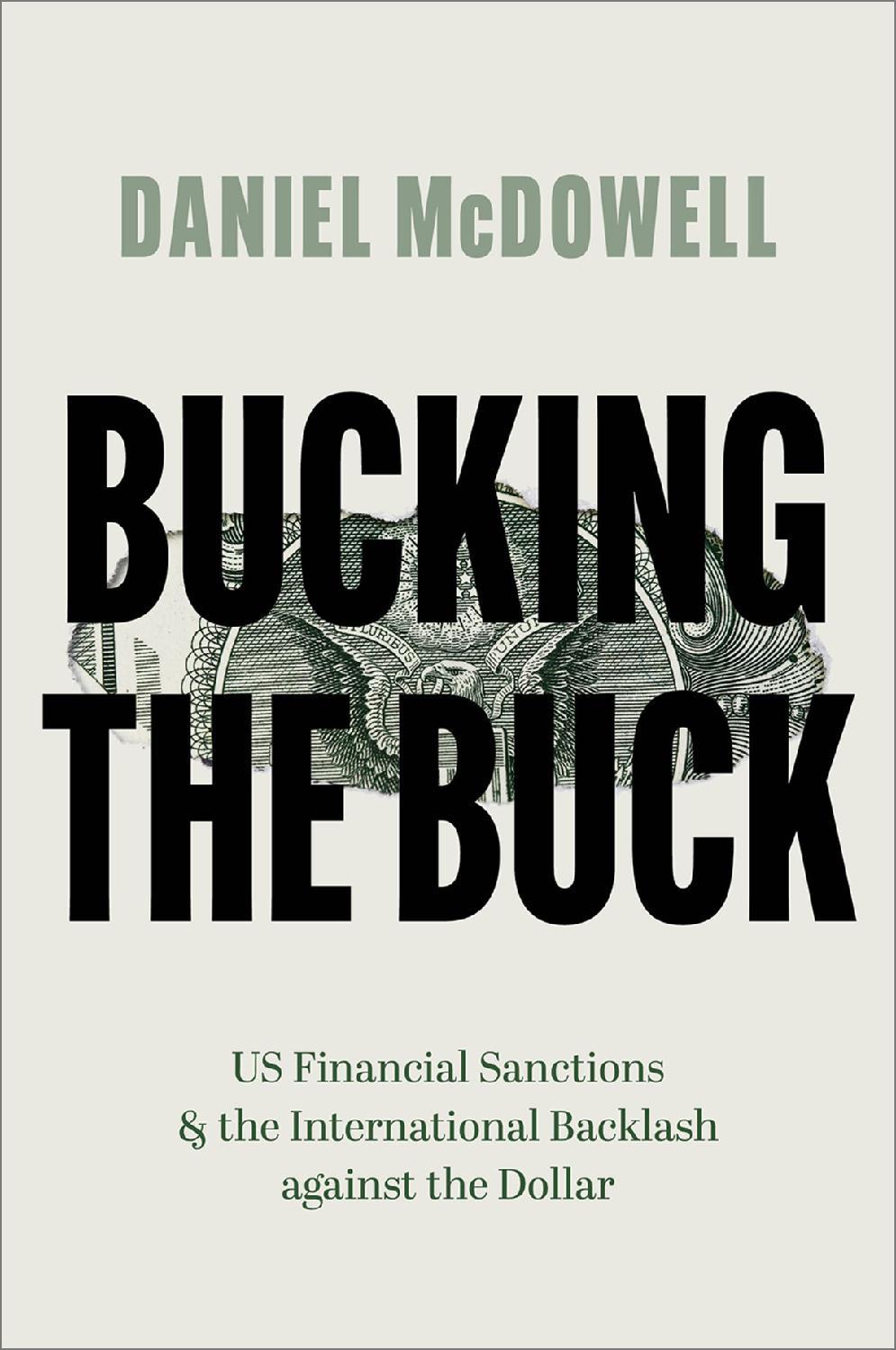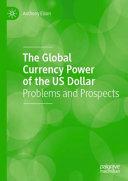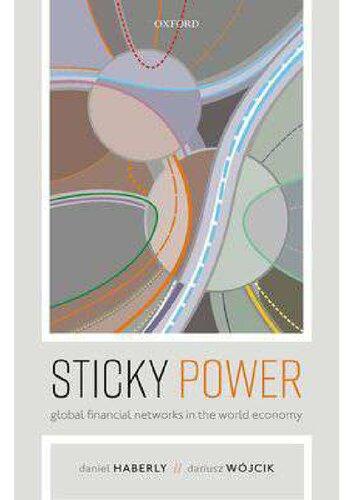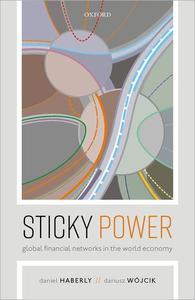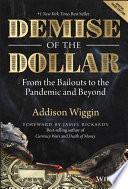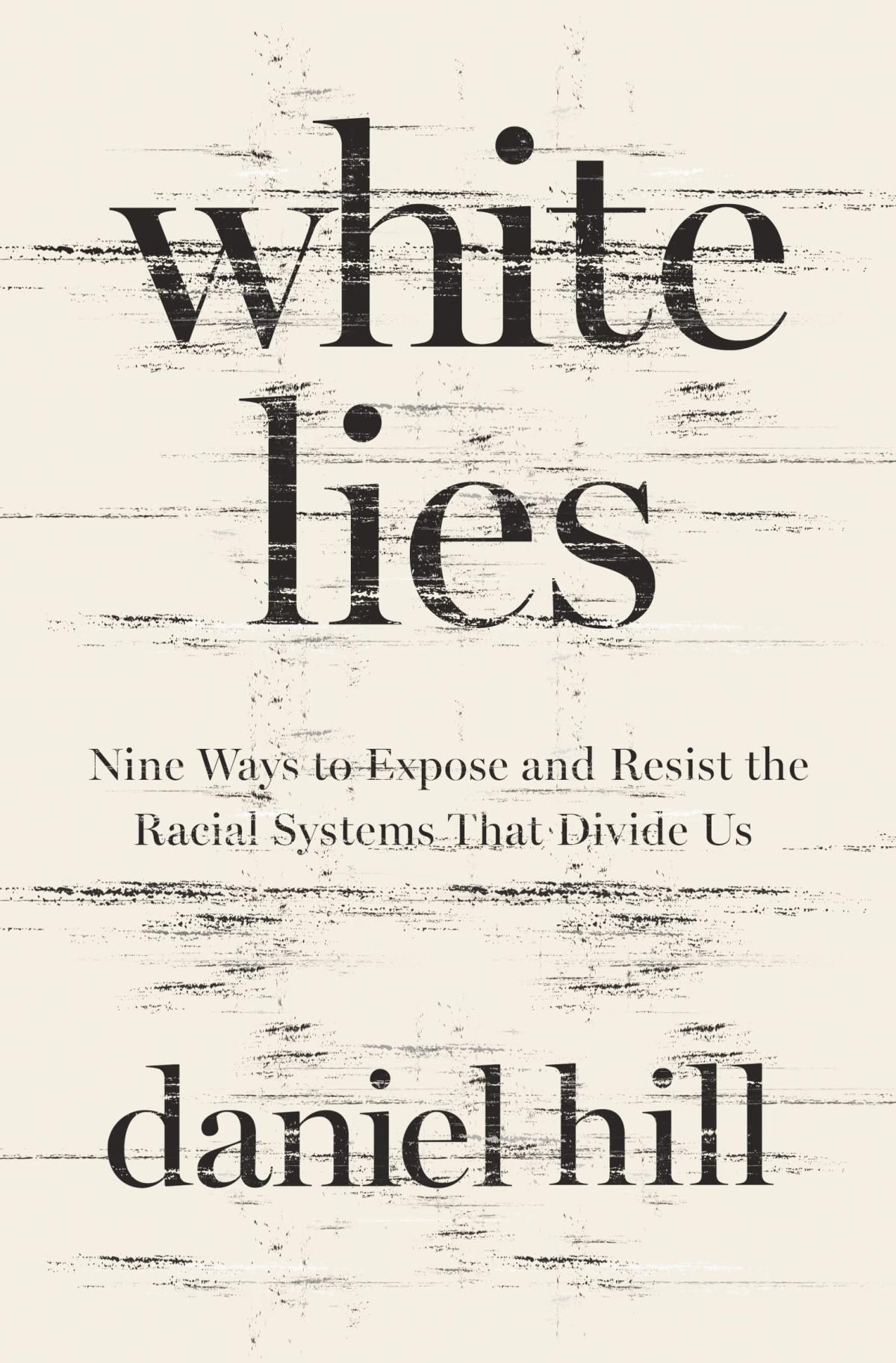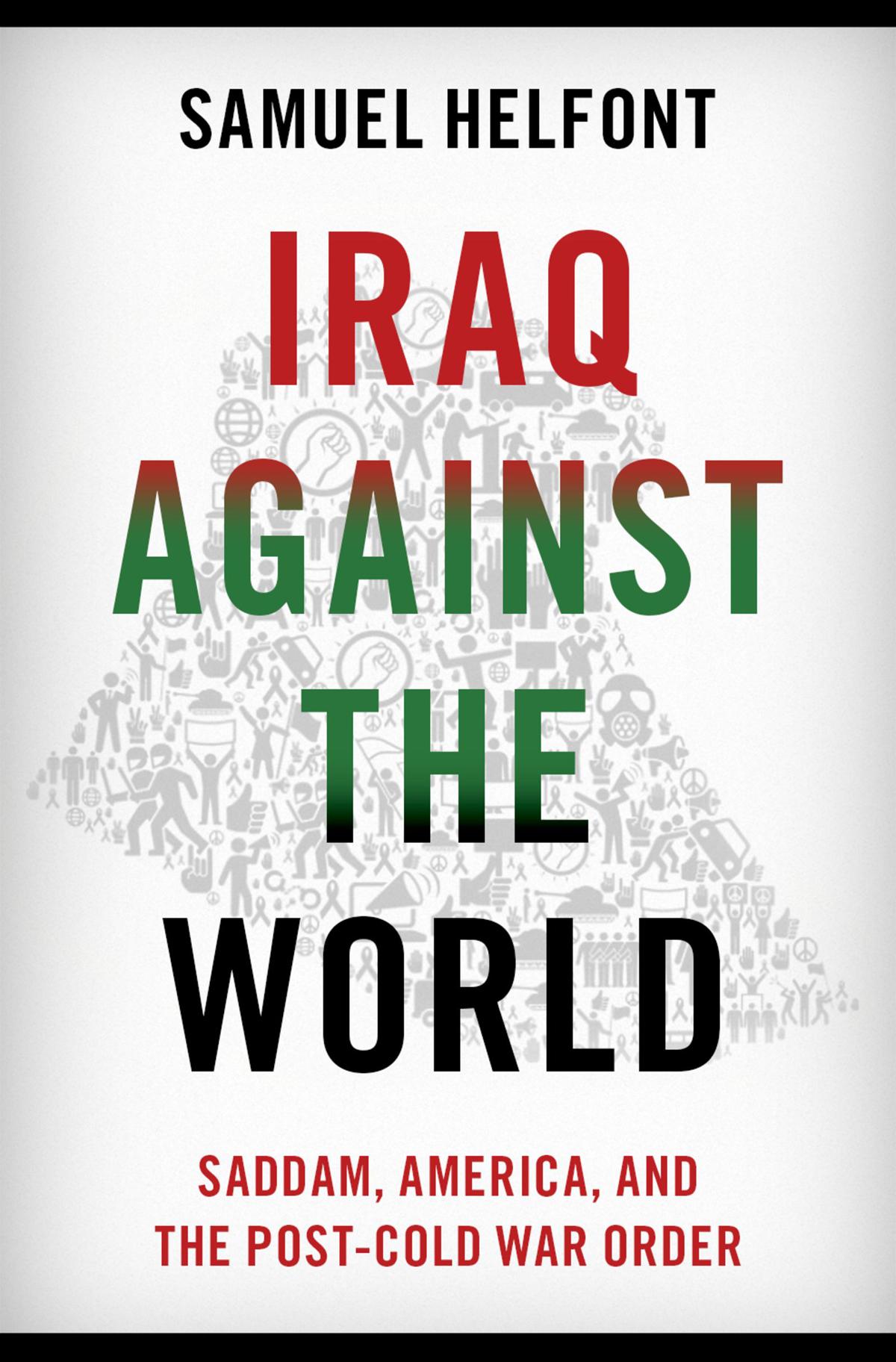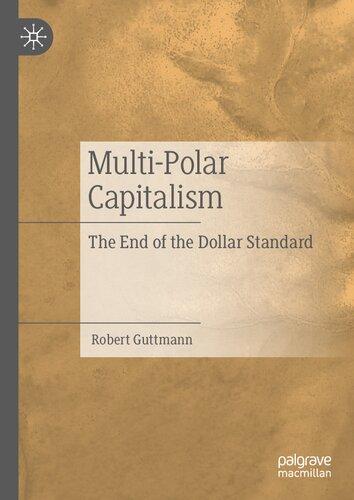Forthe“CrazyCrew”
(Luella,Eileen,andWilliam)
Contents
Figures
Tables
PrefaceandAcknowledgments
Abbreviations
Introduction
1.Financial Sanctions and Political Risk in the International Currency System
2.The Source and Exercise of American Financial Power
3.Sanctions, Political Risk, and the Reserve Currency Role
4.The Anti-Dollar Gold Rush: Central Bank Reserves in the Age of Financial Sanctions
5.Sanctions, Political Risk, and the Dollar as International Payments Currency
6.Payment Politics: Anti-Dollar Responses to Sanctions in Trade Settlement
7.Financial Sanctions and the Dollar’s Rivals
8.China’s Play for Payments Power
Conclusion
Appendixes
Notes
References
Index
Figures
1.1.The Effect of US Foreign Policy on Dollar Policy Orientation.
2.1.Cross-Border Payments by Currency, 2014–2020.
2.2.A Typical International Payments Transfer.
2.3.The US Dollar as a Store of Value, 2010–2020.
2.4.Primary and Secondary Financial Sanctions.
2.5.Sanctions-Related Executive Orders (SREOs) 2000–2020.
2.6.Number of States Actively Targeted by SREOs, 2000–2020.
2.7.SREO Superstar Targets, 2000–2020.
2.8.Count of Cited Reasons for US SREOs, 2000–2020.
3.1.Russian Gold Holdings (metric tons), 2000–2020.
3.2.Russian Reserves, January 2012–December 2020.
3.3.Currency Composition of Russian Foreign Exchange Reserves (%), 2017–2020.
3.4.Russian Foreign Exchange and Gold Assets Held in the United States (%), 2014–2020.
3.5.Turkish Gold Holdings (metric tons), 2016–2020.
3.6.Turkish Reserves, 2012–2020.
4.1.Worldwide Monetary Gold Reserves (metric tons), 2000–2020.
4.2.Annual Change in Gold Reserves by Country, 2008–2020.
4.3.Venezuela’s Foreign Exchange and Gold Reserves, 2001–2020.
4.4.Turkish Gold Exports to Iran (kilograms), 2010–2019.
4.5.Cited Reasons for US Sanctions-related Executive Orders (SREOs), 2000–2020.
4.6.Coefficient Estimates, Annual Change in Gold Holdings (tons).
4.7.Predicted Marginal Effects of SREOs on Gold Holdings.
4.8.Predicted Marginal Effects of Sanctions Risk on Gold Holdings.
4.9.Coefficient Estimates, Annual Change in Long-Term US Treasury Holdings.
4.10.Predicted Marginal Effects of SREOs on Long-Term US Treasury Holdings.
5.1.Currency Composition of Russia-China Trade Settlement, 2013–2020.
5.2.Currency Composition of Russian Export Settlement, 2013–2020.
5.3.Currency Composition of Russian Import Settlement, 2013–2020.
5.4.Currency Composition of Russian Debt, 2013–2020.
5.5.Currency Composition of Turkish Trade Settlement, 2012–2020.
6.1.Number of Countries with Local Currency Swap Agreements, 2007–2020.
6.2.Coefficient Estimates, Count of Local Currency Swap Lines.
6.3.Predicted Marginal Effects of SREOs on Local Currency Swap Lines.
6.4.Coefficient Estimates, Dollar Share in Trade Invoicing or Settlement.
6.5.Predicted Marginal Effects of SREOs and Sanctions Risk on the Dollar’s Share of Trade Settlement.
6.6.Distribution of “Learn More” Responses by Treatment Group.
8.1.Currency Share of Cross-Border Payments, 2014–2022.
8.2.Number of Direct and Indirect CIPS Participants, 2015–2021.
8.3.Foreign Indirect CIPS Participants by Region, 2018–2021.
8.4.Monthly Payments Traffic and Volume, 2015–2020.
8.5.CIPS Participation by Country, 2022.
8.6.Coefficient and Predicted Probability Estimates, CIPS Participation.
C.1.Scree Plot of Eigenvalues after Principal Component Analysis.
C.2.Sample Distribution of Sanctions Risk Variable.
F.1.Multinational Corporations’ Interest in Euro and Renminbi-based Payment Systems.
Tables
6.1.Average Treatment Effects, Vietnam Multinational Corporations Experiment
B.1.Active Sanctions-related Executive Orders (SREOs) 2001–2020
C.1.Correlation between Principal Components and Composite Covariates
D.1.Gold Reserves and US Financial Sanctions
D.2.Long-Term US Treasury Holdings and US Financial Sanctions
E.1.Local Currency Swap Agreement Regression Results
E.2.Dollar Share of Trade Settlement Regression
Results
G.1.List of Direct Participants in Cross-border Interbank Payment System (CIPS), December 2021
G.2.CIPS Participation Regression Results
Preface and Acknowledgments
At the time of this writing, Russia’s brutal and unprovoked war in Ukraine is in its seventh month. Thousands of civilians have been killed. Tens of thousands of soldiers, on both sides, have lost their lives. As the shock of war in Europe unfolded on television screens around the world, the United States and its allies in Europe and Asia were compelled to respond. Though direct military intervention was quickly ruled out, the leaders of these countries reached for one tool of foreign policy early and often: economic sanctions. Chief among the sanctions employed were those measures that denied targeted Russian individuals, businesses, and government institutions access to the global financial system. Within a few months’ time, the Central Bank of Russia, many powerful Russian oligarchs, Vladimir Putin himself, and even his longtime girlfriend and his daughters had all been placed on a fast-growing financial blacklist. As these events played out in real time, public awareness of such measures grew almost as quickly as the long list of sanctions themselves. Cable news networks and opinion pages of major newspapers openly discussed the nuances of the cross-border payment messaging system known as SWIFT, a communication network unknown to even the most astutely informed citizens prior
to February 2022. Experts unpacked for audiences arcane elements of the international financial system to explain how international dependence on the US dollar provided the basis for the West’s swift and punitive economic response. Some observers openly questioned whether cutting off Russia’s access to the dollar—or “weaponizing” the currency, as it has come to be described—would backfire and hurt the greenback’s global standing in the months and years to come.
When I started developing the idea for this book in 2017, I had no idea that the subject would be so salient five years later. Neither did I know that I would write most of this book during a pandemic while splitting time with my wife as teacher to our three, suddenly homeschooling, kids. Many pages of this book (though, I cannot recall which ones) were put to page while an energetic four-year-old entertained himself on my home office floor. Reaching this moment was something that, on many occasions and for long stretches, I doubted I would ever achieve. In fact, I kept this book a secret from everyone but my closest friends and family for four years because I lacked the confidence that it would ever be finished. Completing a long project brings with it many emotions, but the two that I feel most acutely now are relief and gratitude. Though the feelings of relief will quickly recede as the busyness of life overtakes the present moment, my gratitude will endure. I could have never finished this book were it not for the many people who contributed to its development.
At my home institution, the Maxwell School of Citizenship and Public Affairs at Syracuse University, I am indebted to several colleagues. Brian Taylor shared sage wisdom with me about the process of writing a second book. Dennis Rasmussen and Shana Gadarian helped me think through the publishing process and what comes after. Dimitar Gueorguiev provided critical feedback on survey question design. Several graduate students at the Maxwell School assisted with research. Olga Boichak, Michael McCall, and Nikiti Selikov each performed critical tasks at various stages of the project’s development. Two research assistants—J. Michael Dedmon and Jingding Wang—worked with me over the long haul, dutifully and carefully collecting data, analyzing foreign-language media reports, and digging through government documents for information. I am thankful for each hour that these individuals worked on behalf of this book. Generous research support for this book was provided by the Andrew Berlin Family National Security Research Fund at the Institute for Security Policy and Law (ISPL) at Syracuse University. I personally thank Mr. Berlin, his family, and all of the people at ISPL for funding this project from its earliest stages until the final steps of the editing process. Your commitment helped make this possible.
Outside of my home institution, I thank two longtime friends and mentors—Jerry Cohen and Eric Helleiner who each provided feedback in the early days of the project. Thomas Oatley gave me the opportunity to present and receive feedback on my unfinished manuscript at Tulane University in 2019, for which I am grateful. I
thank my good friends and frequent co-authors David Steinberg and Steven Liao for being patient with me as I worked on the book and for providing periodic advice along the way. I am indebted to Eddy Malesky for allowing me to place several questions on the 2019 Provincial Competitiveness Index survey at no cost. Eddy’s commitment to providing public goods for the academy is well known, and this is yet another example of his generosity. At Oxford University Press, I thank my editor Dave McBride for his support and enthusiasm for this project. I am deeply indebted to the three anonymous reviewers who provided exhaustive, invaluable advice for me as I revised the manuscript. The book is so much better for having their collective input. I hope they see their ideas reflected in the final product. I am also indebted to Kelley Friel who skillfully copyedited every line of this book and vastly improved the quality of my language and the clarity of my ideas.
Finally, I thank my family for their enduring support and for keeping me connected to what matters most while working on this project. I am grateful for supportive parents, in-laws, and my creative brother. To my three children—Luella, Eileen, and William—I am sorry that this book often took me away from you, especially during the summers. Your energy and light made the most grueling periods of completing this book bearable. For that, I dedicate this book to each of you. To my incredible wife, Sara, I know that this project caused you to endure many life moments with a grumpy, distracted husband and co-parent. Yet, over the span of five years you cheered me on and supported me through the most challenging
and frustrating moments, as you always have. You listened to my anxieties and provided unyielding encouragement. You selflessly put my needs before yours. Thank you for being my co-author in this life. Without your steadfast love and support, neither the book nor my sanity would have made it to the finish line. I love you.
Abbreviations
BCV Central Bank of Venezuela
CBR Central Bank of Russia
CHIPS Clearing House Interbank Payment System
CIPS Cross-Border Interbank Payment System
INSTEX Instrument in Support of Trade Exchanges
JCPOA Joint Comprehensive Plan of Action
OFAC Office of Foreign Assets Control
PBOC People’s Bank of China
SDN Specially Designated National
SPFS Financial Messaging System of the Bank of Russia
SREO Sanctions-related Executive Order
Introduction
In the last week of April 2018, French president Emmanuel Macron and German chancellor Angela Merkel made back-to-back trips to Washington in an effort to convince US president Donald Trump not to withdraw from the Joint Comprehensive Plan of Action (JCPOA), the multilateral nuclear arms agreement his predecessor had signed with Iran. Then-UK foreign minister Boris Johnson timed his US visit to coincide with an op-ed he wrote for the NewYorkTimesurging Trump to stay in the deal. Johnson even appeared on Fox&Friends, the president’s favorite news program, to plead Europe’s case.1 In the end, none of it worked. On May 8, Trump announced that the United States was pulling out of the Iran nuclear deal. The condemnation from Europe was swift. Major German newspaper Die Zeitpulled no punches, tweeting the day after: “Trump destroys the liberal world order.”2 Merkel more gently echoed these sentiments, saying the move put the multilateral global order in a “real crisis.”3 Macron warned that the move would only make the world a more dangerous place, adding, “I regret the decision of the American president. I think it’s an error.”4 A joint statement from the British, French, and Germans soon followed, condemning the decision.5
That Europe was directing its anger and disappointment at the Trump administration after its controversial decision came as no
surprise. However, several prominent European policymakers soon turned their ire toward what might seem like unlikely targets: the US financial system and the currency that underpins it. German Foreign Minister Heiko Maas was the first to speak up. Writing in Handelsblatt, a German newspaper, in August 2018, Maas characterized the Trump administration’s decision as a “mistake,” adding that Trump’s move made it “essential that we strengthen European autonomy by establishing payment channels independent of the US [financial system].”6 French finance minister Bruno Le Marie quickly backed Maas’s position, saying, “I want Europe to be a sovereign continent, not a vassal, and that means having totally independent financing instruments [from the United States].”7 European Commission president Jean-Claude Junker was also frustrated by Trump’s decision and used his 2018 State of the Union Address to express his displeasure.8 Speaking before members of the European Parliament, Junker stated that more needed to be done to “allow our single currency to play its full role on the international scene.” Noting that Europe paid for 80 percent of its energy imports in dollars rather than euros, he called this “absurd” and challenged members to support a united effort to promote the common currency as an “instrument of a new, more sovereign Europe.”9
Why did the Trump administration’s decision regarding the Iran nuclear deal trigger anti-dollar rhetoric from so many prominent European policymakers? The American withdrawal from the
agreement led to the reinstatement of harsh financial sanctions against Tehran, which had been suspended when the United States signed the JCPOA in 2015. These direct measures blocked the Iranian regime from accessing the global dollar-based financial system, but this is not what irritated the Europeans. The United States also reimposed “secondary sanctions” that went beyond the targeted regime. Secondary sanctions cut off, from the dollar and the financial institutions through which those dollars flow, any thirdparty individual or firm doing business with designated Iranian targets. This was a problem for many European firms that had reentered the Iranian market after the JCPOA was signed. They were now faced with a Hobson’s choice: continue business with Iran (and be blacklisted by the US Treasury) or write off all past investments in their Iranian business relationships. Because of the dollar’s centrality in the global financial system, which includes its use in the settlement of international trade, European companies involved in Iran chose the second option. While losing the potential to develop Iranian business was a blow, losing access to the dollar would have been infinitely more costly. European policymakers’ frustration with the United States was based on a stark reality: the dollar’s global dominance allowed Washington to wield its currency as a weapon of foreign policy. This motivated European countries to discuss how to promote the euro’s global role to minimize future injury.
During the JCPOA negotiations in 2015, then-president Barack Obama foreshadowed Europe’s reaction to backing out of the agreement. He warned that the failure to reach a deal would result
in new US sanctions that would “raise questions internationally about the dollar’s role as the world’s reserve currency.”10 Secretary of State John Kerry offered a more alarmist take, asserting that walking away from the nuclear deal and unilaterally imposing sanctions was “a recipe . . . for the American dollar to cease to be the reserve currency of the world.”11 Critical observers characterized their statements as breathless, hyperbolic rhetoric. One popular business television personality asked in a tweet, “Does the secretary [John Kerry] know anything about the dollar?”12 Another critic opined that there was no “less convincing argument” for the Iran deal than “fear-mongering” about the dollar.13 Others claimed any assertion that the dollar would lose its top global position due to “geopolitical” forces was “laughable”; they maintained that only economic forces could weaken the currency’s dominance.14 Obama’s and Kerry’s claims were both exaggerations—as political rhetoric often is. Yet criticizing their political hyperbole by jumping to the conclusion that the dollar’s status as the world’s pre-eminent and most widely used currency is divorced from politics is misguided.
In a speech the year after the JCPOA was signed, Jack Lew, then secretary of the US Treasury, offered a more nuanced take on the link between financial sanctions and the dollar’s status, warning of “sanctions overreach.” While Lew explained that financial sanctions are a powerful tool of US foreign policy made possible by the dollar’s global dominance, he cautioned that their overuse could, over time, weaken the Treasury’s ability to employ them effectively. “The more
we condition use of the dollar and our financial system on adherence to US foreign policy,” he detailed, “the more the risk of migration to other currencies and other financial systems in the medium-term grows.”15 Careful to avoid the apocalyptic tone of his colleague at the State Department, Lew offered a measured explanation of why the dollar’s dominance depended not just on economic factors but on political ones as well. According to the memoir of a high-ranking Trump administration official, Lew’s successor Steven Mnuchin also worried that relying on sanctions could damage the dollar’s reserve currency status and push more cross-border transactions into euros.16
Financial sanctions again gained prominence as a key tool in the West’s response to the unprovoked Russian invasion of Ukraine in February 2022. Days later, the Central Bank of Russia, many Russian oligarchs, and even Putin himself were cut off from their dollardenominated assets and blocked from transacting in the dollar-based financial system.
As before, questions about potential blowback from sanctions emerged. Influential economist and first deputy managing director at the International Monetary Fund, Gita Gopinath, warned that Washington’s measures could fragment the international monetary system. Certain economies, she predicted, might gradually move away from the dollar in their trade and investment activities.17
Strategists at major global banks also weighed in. Credit Suisse’s Zoltan Pozsar called the sanctions a turning point for the dollar’s
global dominance. Dylan Grice of Société Générale forecast via a tweet that the moment marked “the end of USD hegemony & the acceleration towards a bipolar monetary order.”18 Renowned journalist and associate editor at the FinancialTimes, Martin Wolf, predicted a “currency disorder” in which the dollar’s dominance is increasingly challenged.19 State media in China gleefully published commentary on the subject with headlines like “Biden takes victory lap over Russia sanctions but US dollar hegemony shows cracks.”20 In public debates, the notion that politics influences the international appeal of currencies has become nouveauchic.Among scholars of international political economy (IPE), such ideas have deeper roots. In her pathbreaking 1971 book SterlingandBritish Policy, Susan Strange argued that the pound was able to extend its reign as a top global currency largely due to Britain’s political relations with former dependencies.21 The IPE literature on the political underpinnings of international currencies has since grown considerably (despite being mostly ignored by economists).22 Yet the current public debate about sanctions differs from how the field of political economy has modeled the relationship between politics and a currency’s international popularity.23 Prior work in IPE has generally emphasized how political variables either help a currency move up the international money hierarchy or help it maintain dominance. Such research points out that currencies issued by states with large militaries and extensive alliances benefit from enhanced market confidence. States with these qualities can also
use geopolitical leverage to pressure friends and allies to continue to back their currencies. The current debate about sanctions and the dollar suggests that politics may also work in the opposite direction. Political factors need not only propel or reinforce a currency’s crossborder use; they may also undermine it. The scholarly debate on international money has only very recently started to seriously consider the possibility that financial sanctions might eventually “trigger a politically motivated diversification away from . . . the dollar.”24
The European response to President Trump’s decision to withdraw from the Iran nuclear deal provides anecdotal evidence in support of this proposition. If this were the only example of such a reaction, we might easily dismiss it as meaningless bluster. After all, the Europeans have a decades-long history of complaining about the dollar and the “exorbitant privilege” that comes with it.25 Yet, there are many other examples of backlashes against the dollar in response to financial sanctions. The US Treasury has blacklisted targets in Iran, Russia, Turkey, and Venezuela in recent years. Each retaliated by lambasting the dollar’s grip on the global financial system and took steps to promote the use of alternative currencies in their international business dealings. Some reduced their holdings of dollar assets and invested in other currencies or assets like gold.
The Argument
The book’s central claim is that US financial sanctions generate politicalriskin the international currency system. In this context, political risk is related to, but distinct from, its meaning in the study of foreign investment.26 I define political risk as thepotentialfora politicalacttoraisetheexpectedcostsofusingacurrencyforcrossbordertransactionsorasastoreofvalue. Over time, the accumulation of political risk in the system creates incentives for governments to adopt anti-dollarpoliciesthat promote the use of currencies or assets other than the dollar for investment and crossborder transactions. Of course, anti-dollar policies may fail. Thus, on their own they do not imply that the dollar is playing a diminishing role in a country’s international economic relations. They merely indicate that the government is attempting to bring about such a shift. When sanctions-induced anti-dollar policies dosuccessfully reduce reliance on the dollar, it signifies de-dollarization—the intentional reduction of the dollar’s role in a nation’s cross-border economic activities.
The book explores this argument with a series of empirical chapters that examine the first two decades of the twenty-first century, a period in which the United States steadily increased its use of financial sanctions against foreign adversaries and pariah states. As subsequent chapters will show, in some cases the link between US financial sanctions and anti-dollar policy reactions from targeted governments is undeniable. Other cases are suggestive, though less conclusive, of a link. The evidence that sanctions
provoke anti-dollar policies is strongest for countries that have already been targeted by the United States. There is even limited support for the claim that the risk of being sanctioned provoked preemptive efforts to reduce dollar dependence. On the whole, the illustrations in this book support its central claim: sanctions generate political risk, provoke anti-dollar policies among targets, and in some cases correlate with de-dollarization.
What does this mean for the dollar’s status and for US power more generally? Will we look back on this moment in a few decades and identify sanctions as the cause of the dollar’s “suicide” and the end of American financial might?27 While extreme predictions get “clicks” (and perhaps sell books), that is not what I conclude. Despite growing complaints about how the United States wields the dollar as a weapon, the currency retains considerable economic (and political) advantages over all potential rivals. Those circumstances are unlikely to change anytime soon. Many of the anti-dollar policy responses identified in this book were implemented out of necessity. Targeted states dump the dollar not because they wantto, but because they have no other choice. Most would rejoin the dollarbased system if they could. Moreover, where anti-dollar policies have been tried, some have failed to produce the intended result. And when de-dollarization has occurred, it has been marginal, rather than transformational. Dollar dependence remains the reality, even for sanctioned regimes.
Though this book stops short of doomsday predictions, the implications of its conclusions should not be dismissed as meaningless. As the United States increasingly used its currency for coercive means in the early twenty-first century, discontent with the use of the dollar for political reasons rose. Spurned governments responded with measures designed to insulate their economies from US financial pressure. The responses were overwhelmingly ad hoc, haphazard, uncoordinated, and devoid of leadership. But that could change. If US reliance on sanctions continues to grow with the same level of intensity and frequency over the next twenty years, the number of anti-dollar states will continue to grow—especially if the United States employs financial sanctions unilaterally. The larger the pool of discontents—both in the total number of states and the group’s aggregate economic size—the more attractive it becomes for US rivals to pounce. As the potential “user base” of an alternative financial network grows, there will be greater incentives to build that network. Coordination among exasperated capitals will become easier, reducing the transaction costs of cooperation. Who might step in and attempt to meet the needs of this underserved market? Europe and China are possible challengers. Brussels and Beijing are both keenly aware of the growing frustration with the dollar. While they are unlikely to dislodge the dollar from pre-eminence, a less transformative outcome could still impact American financial power. Smaller steps could chip away at the dollar’s dominance in ways that limit the effectiveness of financial sanctions as a tool of statecraft. The global financial system
could fragment: countries that maintain fraught relations with Washington could conduct more of their business in less efficient (but politically safer) currency networks, and central banks would become more likely to invest surplus reserves in assets like gold and alternative, less traditional reserve currencies. These changes would make US financial sanctions less effective. Coercive threats of sanctions would be far less successful. The US capacity to cripple adversaries’ economies and, indirectly, degrade their military capabilities would shrink. Thus, we are left with Jack Lew’s policy paradox: while dollar primacy gives the United States a powerful foreign policy weapon, its overuse might cause its disarmament.28
Plan of the Book
Chapter 1 presents the theoretical and conceptual framework that guides the rest of the book. Until recently, most research on the link between politics and international currency status has emphasized how US foreign policy promotes and sustains the dollar’s global appeal. Scholars have only recently begun to consider how US foreign policy, including its use of sanctions, might tarnish the dollar’s shine by creating expectations of costs associated with its use. The chapter also more fully introduces the concept of political risk in the international currency system and describes the main argument that is illustrated in subsequent chapters. Chapter 2 explains how dollar dominance gives the United States the unrivaled capacity to cut foreign actors off from their dollar-
based assets and from the global dollar-based financial system. It unpacks the mechanics of the correspondent banking system in which US financial institutions serve as intermediaries in most crossborder financial transactions. It then describes the critical role played by presidential executive orders and the US Treasury’s Office of Foreign Assets Control in overseeing and enforcing the US financial sanctions regime. Finally, the chapter presents original data documenting how the United States has used its financial sanctions capabilities with increasing frequency in the first two decades of the twenty-first century, targeting states with specific characteristics. I use these data to illustrate how political risk associated with the dollar varies across countries and over time: the risk of facing sanctions is not equally distributed.
Chapter 3 examines the dollar’s position as the world’s leading store of value. This enables the United States to freeze foreign actors’ dollar-based assets, effectively cutting off adversaries from their financial wealth. Washington has employed such measures in concentrated efforts to pressure politically connected elites in target countries and as part of broad strategies to topple authoritarian regimes. The chapter then presents empirical case studies of Russian and Turkish reactions to US sanctions. Though the evidence is strongest in the Russian case, both countries responded with heightened anti-dollar rhetoric, suggesting Washington’s actions generated political risk concerns in both countries. This rhetoric was accompanied by a suite of anti-dollar policies designed to reduce
